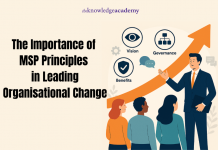Introduction
Software development is often not a one-time job but an ongoing process that may take years. Identifying the right resources, allocating tasks, and working under tight deadlines while maintaining the optimum quality of deliverables can be challenging. Among other software development methodologies like waterfall or DevOps, Agile is flexible, adaptable, and the most efficient. According to Zippia, 71% of US companies opt for agile software development, as it has a 64% success rate and a 60% growth in revenue. Let’s explore agile methodology and why agile software development is reliable and successful in detail.

What is Agile Methodology?
An agile methodology is a practical approach to efficiently managing a project by breaking it down into smaller, more manageable iterations. That way, the team can build a minimum viable product (MVP) faster and keep enhancing features and functionalities based on feedback from end users.
The concept behind agile is to deliver high-quality products by streamlining the overall software development process — it does so by facilitating incremental deliveries, seamless team collaboration, continuous evaluation, working efficiency, and cost optimization. Thus, agile is a win-win for both companies and customers as they can deliver quality products while minimizing unnecessary costs. Though agile methodology is ideally designed for software development, it’s also widely used in other sectors.
Roles in Agile Team
The agile methodology emphasizes the importance of building robust agile teams to build a successful product. An agile team often comprises users, a product owner, a team leader/ Scrum master, and a software development team.
Firstly, the agile software development process starts by defining the users for that specific product. Then comes the product owner, who derives the vision, scope of the project, gaps to be filled, and values to be addressed. The team leader or Scrum master takes instructions from the product owner and guides the development team to achieve them. Next is a multidisciplinary software development team that follows guidelines from the team leader and user feedback and develops high-quality software that serves the purpose. However, the roles discussed here are primary, and the agile team may have more positions depending on the project’s scope.
1. Users
End users or customers come first on the list. Understanding the customer’s needs, wants, behavior, and pain points will help you build suitable products that benefit them.
2. Product Owner
The product owner is often the captain of the ship, who leads and directs the team leader and the entire team. From understanding the stakeholders’ ideas and requirements and explaining them to the team leader, the product owner sets the road map for the software development team. Often the product owner has a clear long-term vision of the project and can suggest the best possible action items for development throughout the project life cycle.
3. Team Leader/ Scrum Master
The Team Leader or Scrum Master coordinates with the team members, supports, and assists the team during the entire project development phase. The Scrum Master takes the Product Owner’s instructions and ensures the team finishes the tasks accordingly. Conducting regular meetings and communicating evolving requirements with the team while eliminating any hurdles on the way are some of the day-to-day activities of the Scrum Master.
4. Development Team
An Agile development team need not be limited to developers but often includes quality assurance engineers, designers, writers, UX specialists, and more. Agile methodology recommends the development team should be multidisciplinary, diverse, and inclusive, with people from different backgrounds and skill sets. Thus, everyone will have new skills and experiences to bring to the table, leading to new ideas and innovation.
Agile Framework Explained
An Agile framework refers to the various approaches, principles, and practices based on Agile values that help teams work efficiently and build high-quality software products. All Agile frameworks work the same as Agile methodologies, supporting the same Agile values. The key concept behind the Agile framework is its flexibility and responsiveness to ongoing changes, ensuring customer satisfaction.
Organizations use Agile frameworks based on their needs and their own Agile processes. With various approaches and Agile processes, there is no one best framework. It varies from one firm to another depending on their company size, team structure, available resources, and stakeholder requirements. Thus, businesses should opt for the framework that best suits their organization and project needs. Here are some of the popular Agile frameworks that software development companies widely use:
- Kanban
- Scrum
- Dynamic Systems Development Method (DDSM)
- eXtreme Programming (XP)
- Crystal
- Disciplined Agile (DA)
- Adaptive Software Method (ASD)
Wrapping up:
Agile is an iterative, incremental software development methodology that encourages team collaboration, adaptive planning, and continuous improvement. Agile teams build software applications in small increments based on customer feedback and evolving needs of the stakeholders, ensuring quality deliverables. If you’re unsure which Agile framework to use for your Agile software development, you can outsource it to a reliable and experienced software development company.






